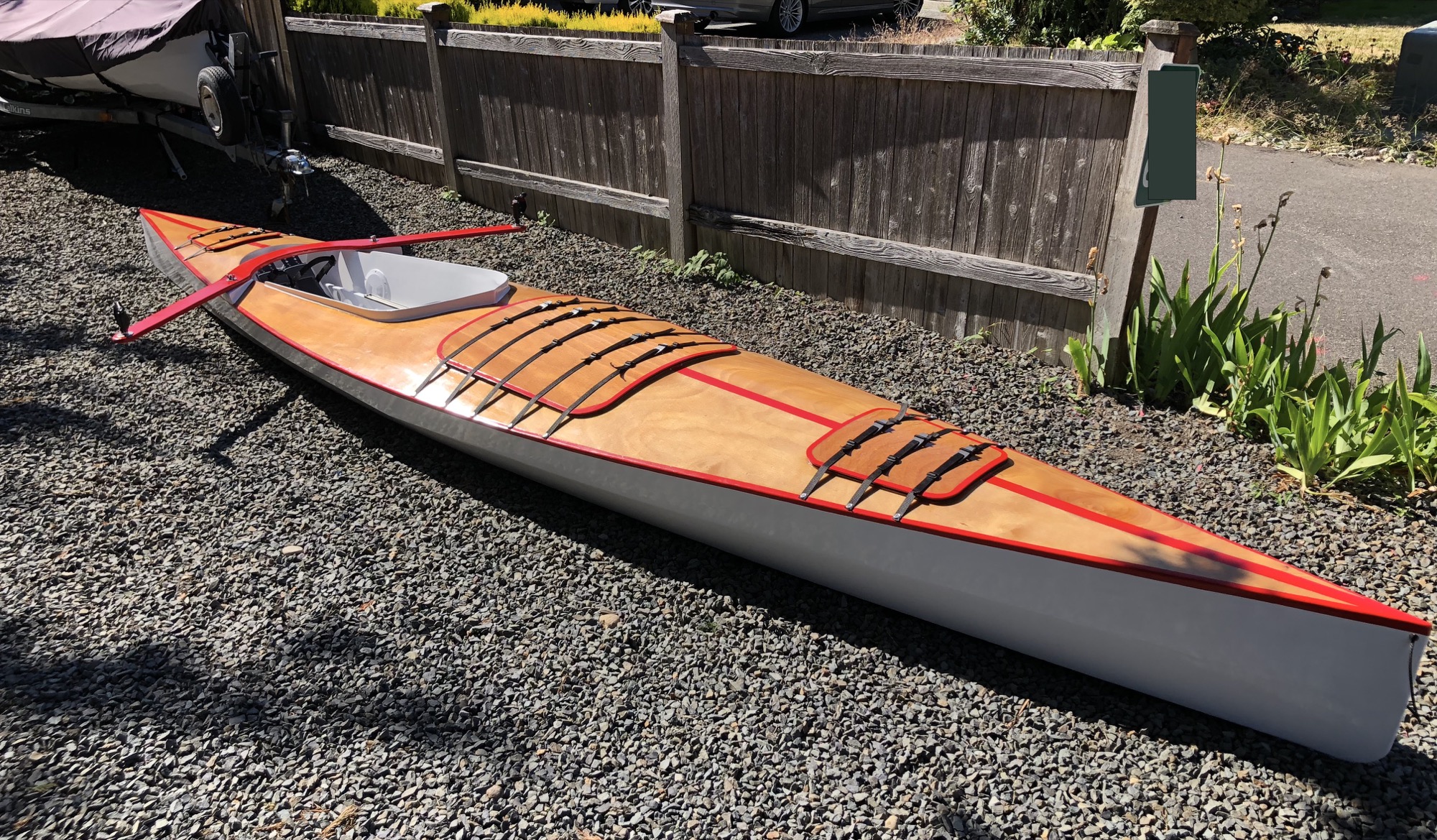-
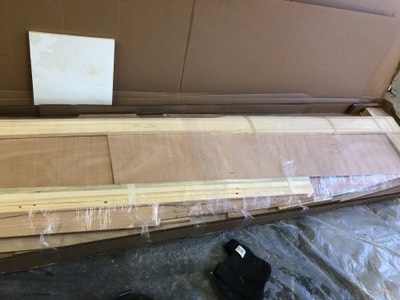
1/30/18 - The project begins!
-
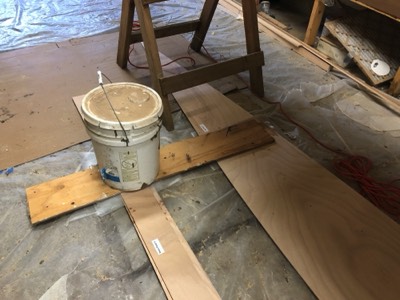
The bottom panels and hull panels are epoxied together.
-
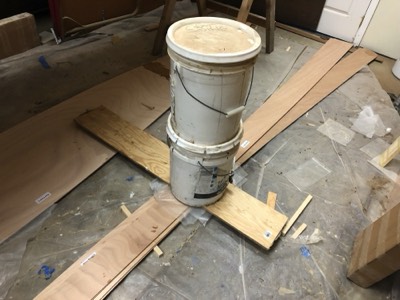
1/31/18 - The hull panels are epoxied to full length.
-
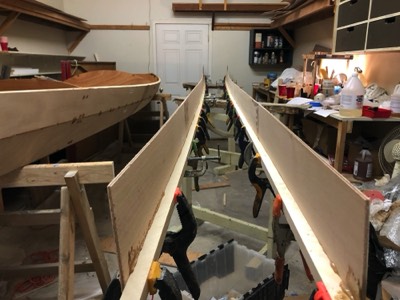
2/2/18 - Sheer clamps are epoxied to the upper panels.
-
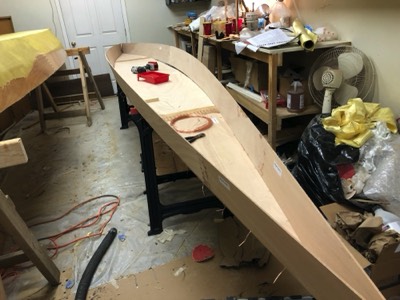
2/7/18 - The bilge panels are partially wired in place.
-
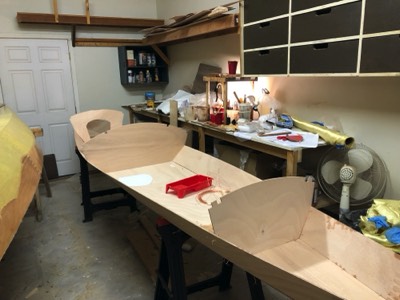
2/8/18 - The bulkheads are wired in place.
-

The hull is wired together.
-
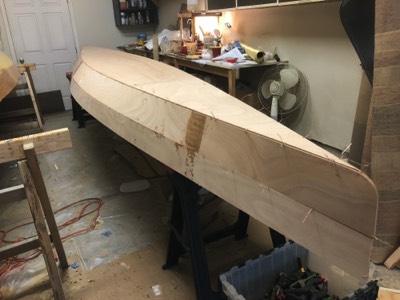
2/9/18 - The wires are tightened.
-
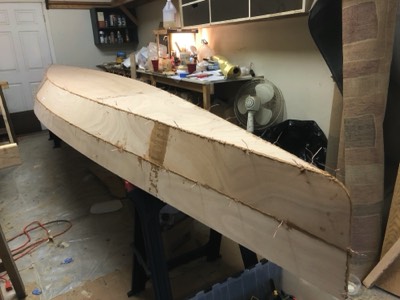
The seams are filled with thickened epoxy.
-

2/12/18 - The wires are pulled out and the hull is flipped over.
-
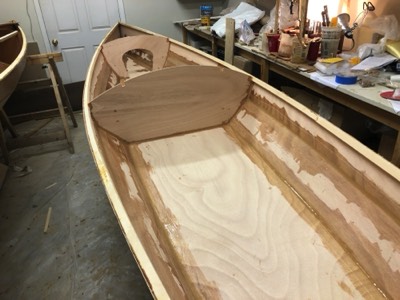
2/13/18 - The inside seams are filled with epoxy and covered with fiberglass tape.
-

2/14/18 - The interior is sealed with epoxy.
-
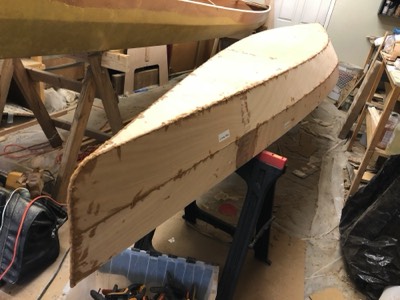
2/16/18 - Gaps in the seams are filled with thickened epoxy.
-
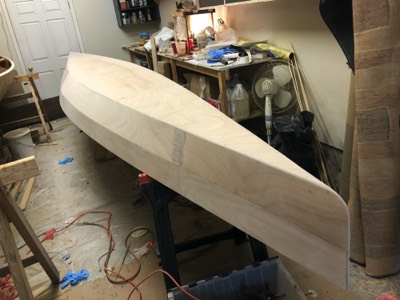
2/20/18 - The hull is sanded smooth.
-

A short length of PVC is epoxied in the bow and stern. This will allow for a secure attachement point for carrying handles.
-

2/21/18 - The hull is fiberglassed.
-
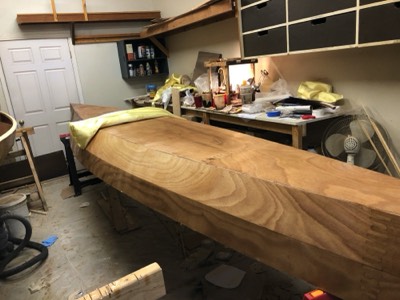
2/22/2018 - Kevlar cloth is ready to be laminated on top of the fiberglass.
-
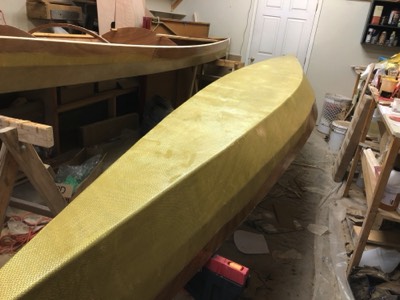
The kevlar is saturated with epoxy.
-
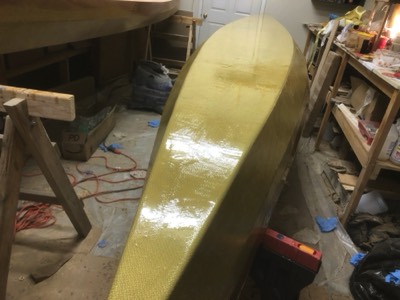
2/23/18 - The kevlar is given a fill coat of epoxy.
-
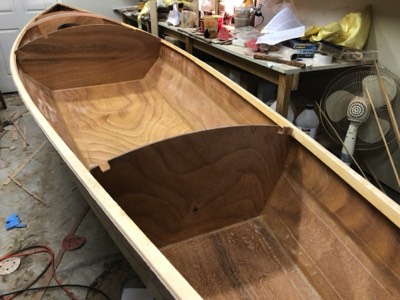
2/28/18 - The sheer clamps are shaped to accommodate the curve of the deck.
-
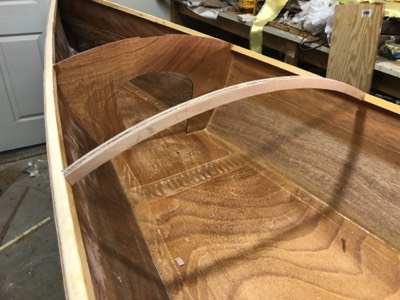
The deck beam is installed.
-

The inside faces of the cockpit walls are sealed with epoxy.
-
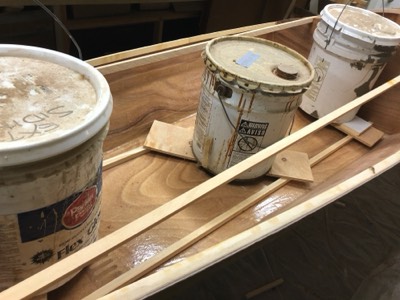
3/1/18 - The cockpit wall stringers are epoxied in place.
-
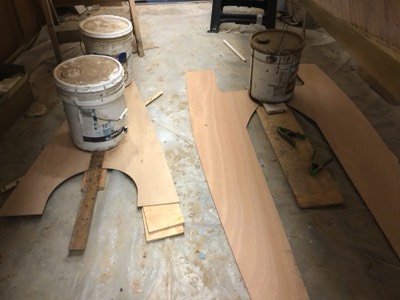
3/2/18 - Two of the deck panels are epoxied together.
-
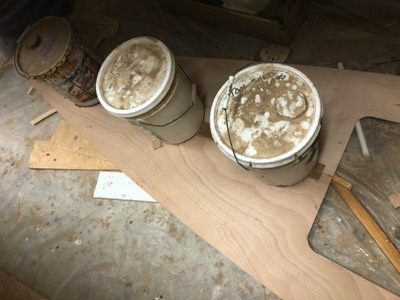
3/5/18 - The forward deck panels are epoxied together.
-
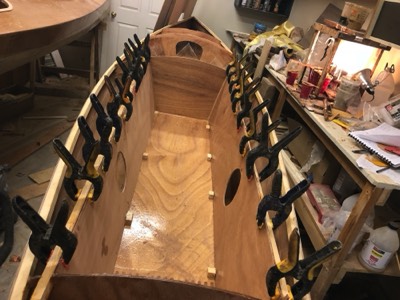
3/7/18 - The cockpit walls are epoxied in place.
-
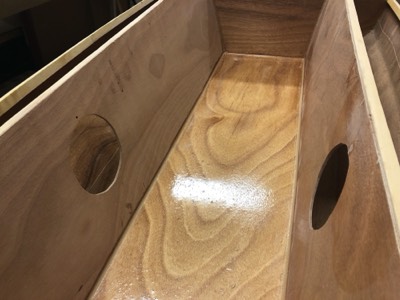
3/8/18 - Epoxy fillets are applied around the cockpit walls.
-
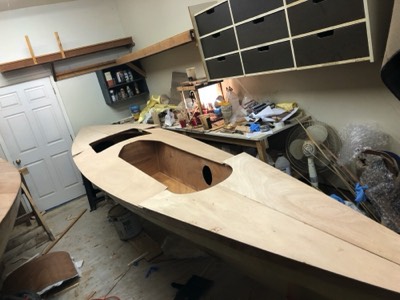
3/12/18 - The deck panels are placed on the hull after given a fill coat of epoxy on the underside.
-
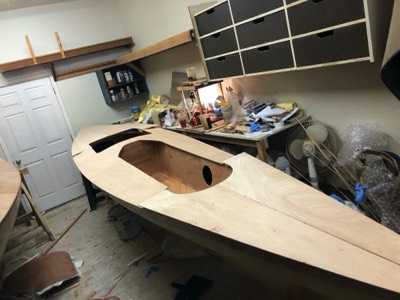
The panels are nailed to the sheer clamps.
-
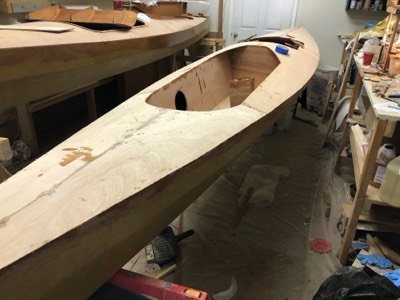
3/15/18 - The overhanging deck is trimmed and any gaps filled with thickened epoxy.
-
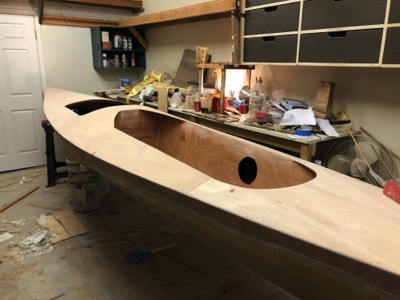
3/16/18 - The deck is sanded smooth.
-
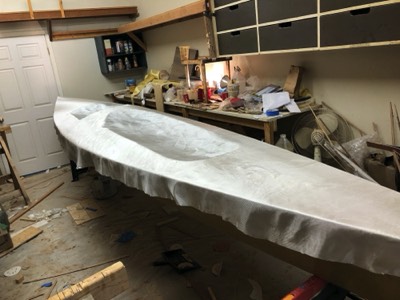
3/19/18 - Fiberglass cloth is laid on the deck.
-
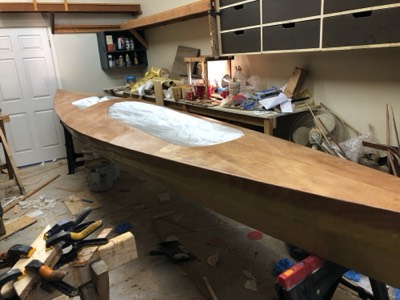
The cloth is saturated with epoxy.
-

3/20/18 - Two fill coats of epoxy are applied to the deck.
-
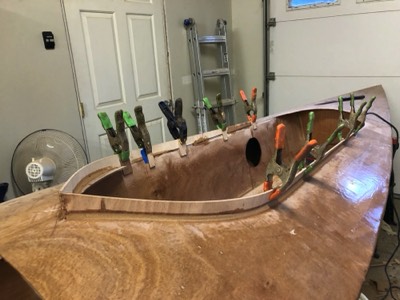
4/6/18 - The cockpit coaming is epoxied into place.
-

4/12/18 - The hatch shapes are traced onto masking tape.
-
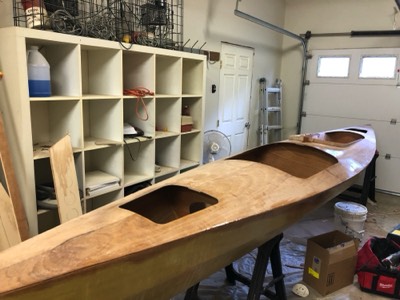
The hatch openings are cut out.
-
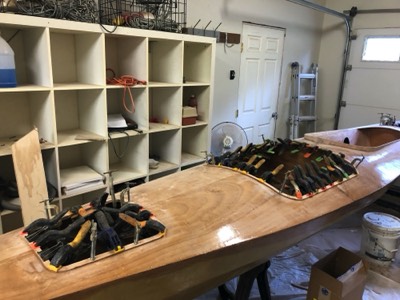
Hatch lips are epoxied in place.
-

4/24/18 - The rigger mounting blocks are epoxied in place.
-
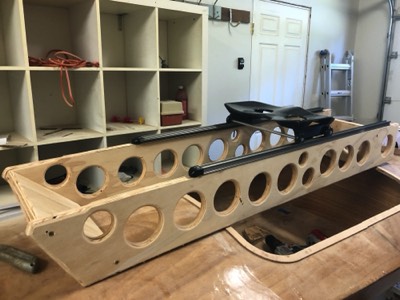
4/26/18 - The sliding seat frame is assembled.
-
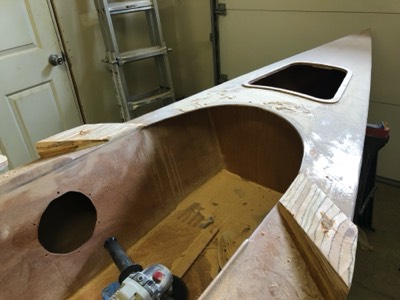
4/27/18 - The rigger mounting blocks are cut to shape.
-
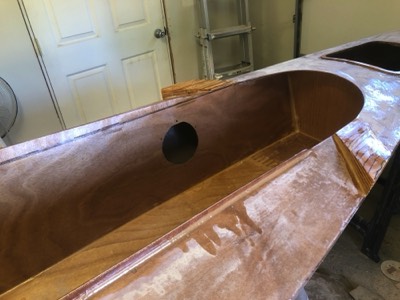
5/14/18 - The inside of the cockpit is sealed with epoxy.
-

The sliding seat frame and rigger are sealed with epoxy.
-
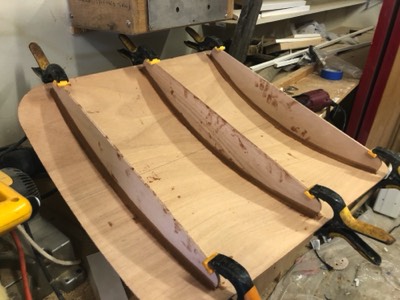
5/15/18 - The large center hatch supports are epoxied in place.
-
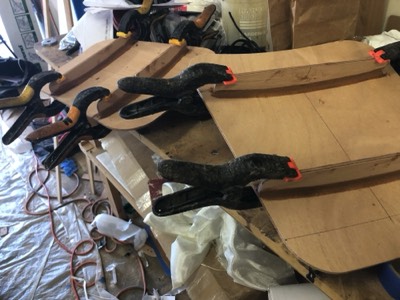
Supports are epoxied to the other hatches.
-

5/16/18 - Washers are inlaid into the underside of the rigger.
-
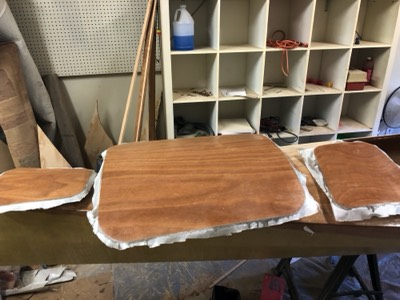
5/17/18 - The tops of the hatch covers are fiberglassed.
-
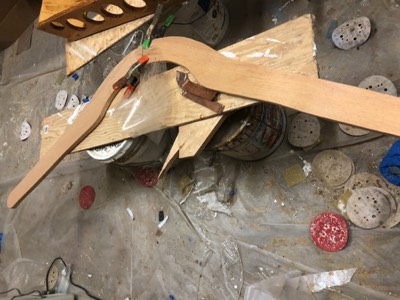
The underside of the rigger is fill coated.
-
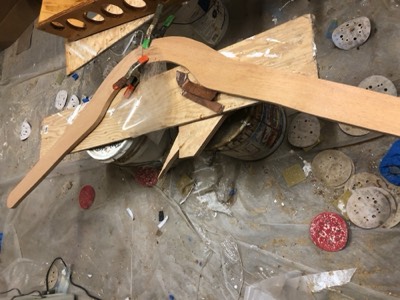
5/21/18 - The rigger is assembled from two pieces of fir.
-
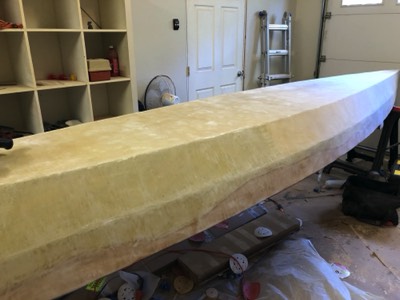
The hull is sanded.
-

5/22/18 - The rigger is fiberglassed and the undersides of the hatches are epoxy sealed.
-
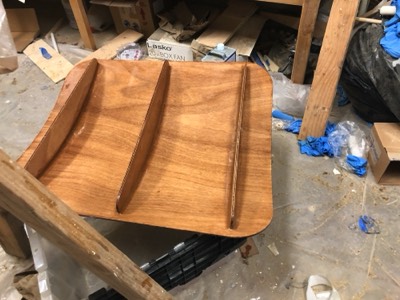
The main center hatch is sealed with epoxy.
-
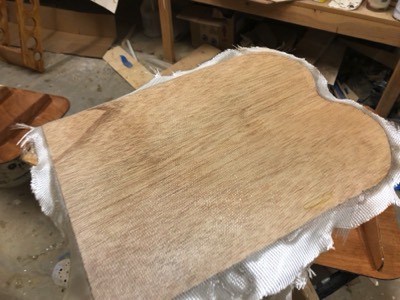
The foot brace plate is fiberglassed.
-
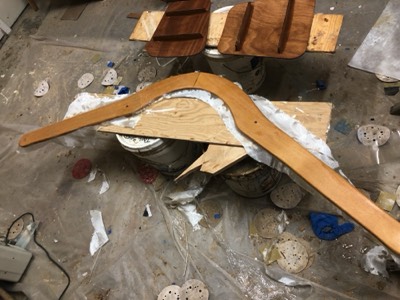
5/24/18 - The top of the rigger is fiberglassed.
-

6/1/18 - The deck and hatch covers are taped in preparation for varnishing.
-
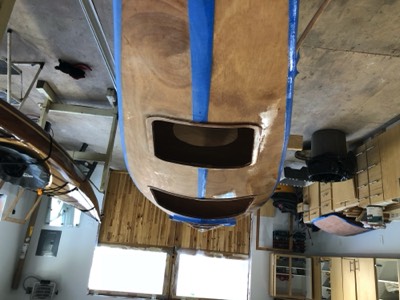
6/5/18 - The first coat of varnish is half on.
-
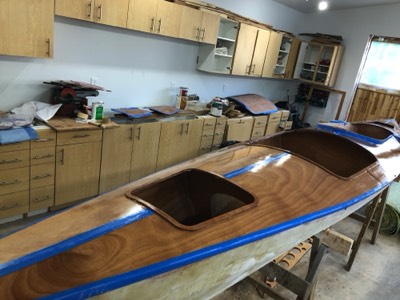
The fisrt coat of varnish is complete.
-
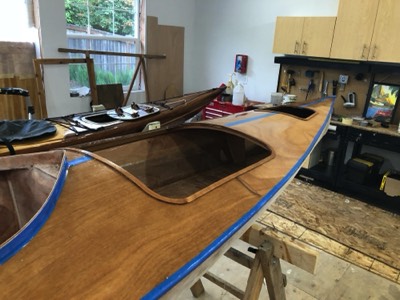
6/6/18 - Two coats of varnish.
-
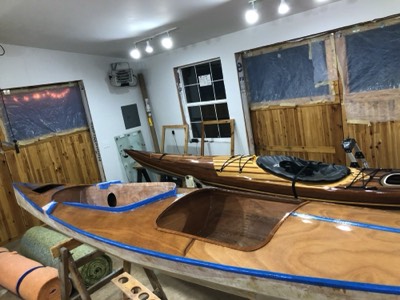
6/7/18/ - Varnishing is complete.
-
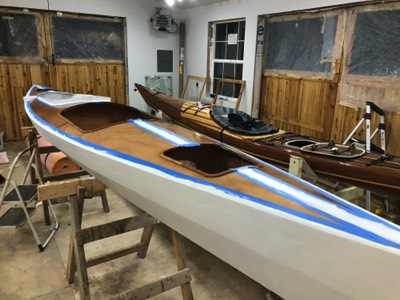
6/8/18 - The first coat of primer is applied everywhere except the bottom panel.
-
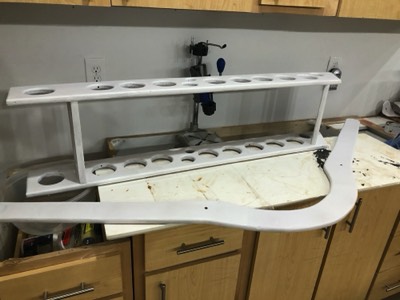
Seat frame and rigger are primered.
-
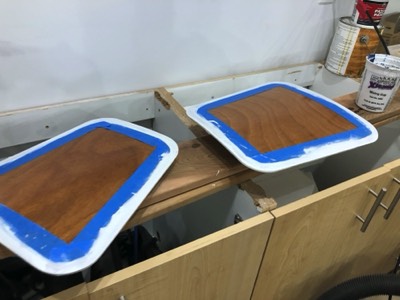
Hatch covers get primer.
-

6/9/18 - The first coat of red goes on the accent stripe.
-

The rigger is painted red.
-
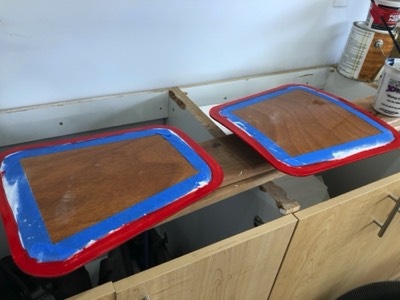
Accent stripes around the hatch covers are painted.
-
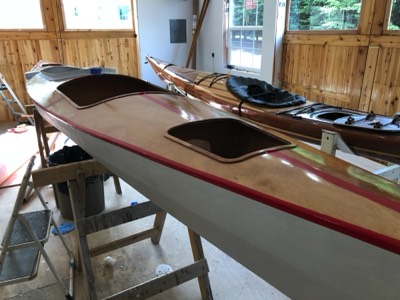
6/12/18 - White paint will be applied next.
-
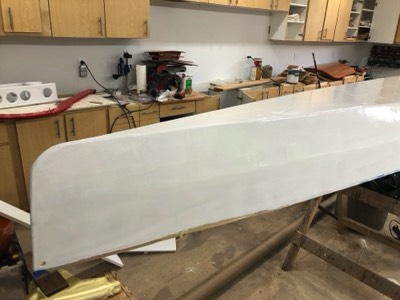
6/13/18 - The hull is painted white.
-
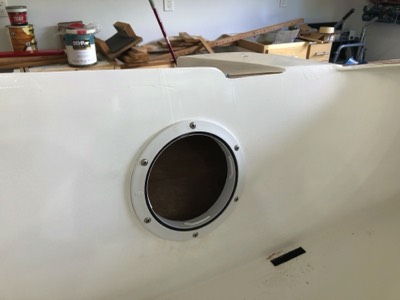
6/25/18 - Deck plates are installed in the cockpit.
-

6/26/18 - Hatch straps and rigger are installed.

